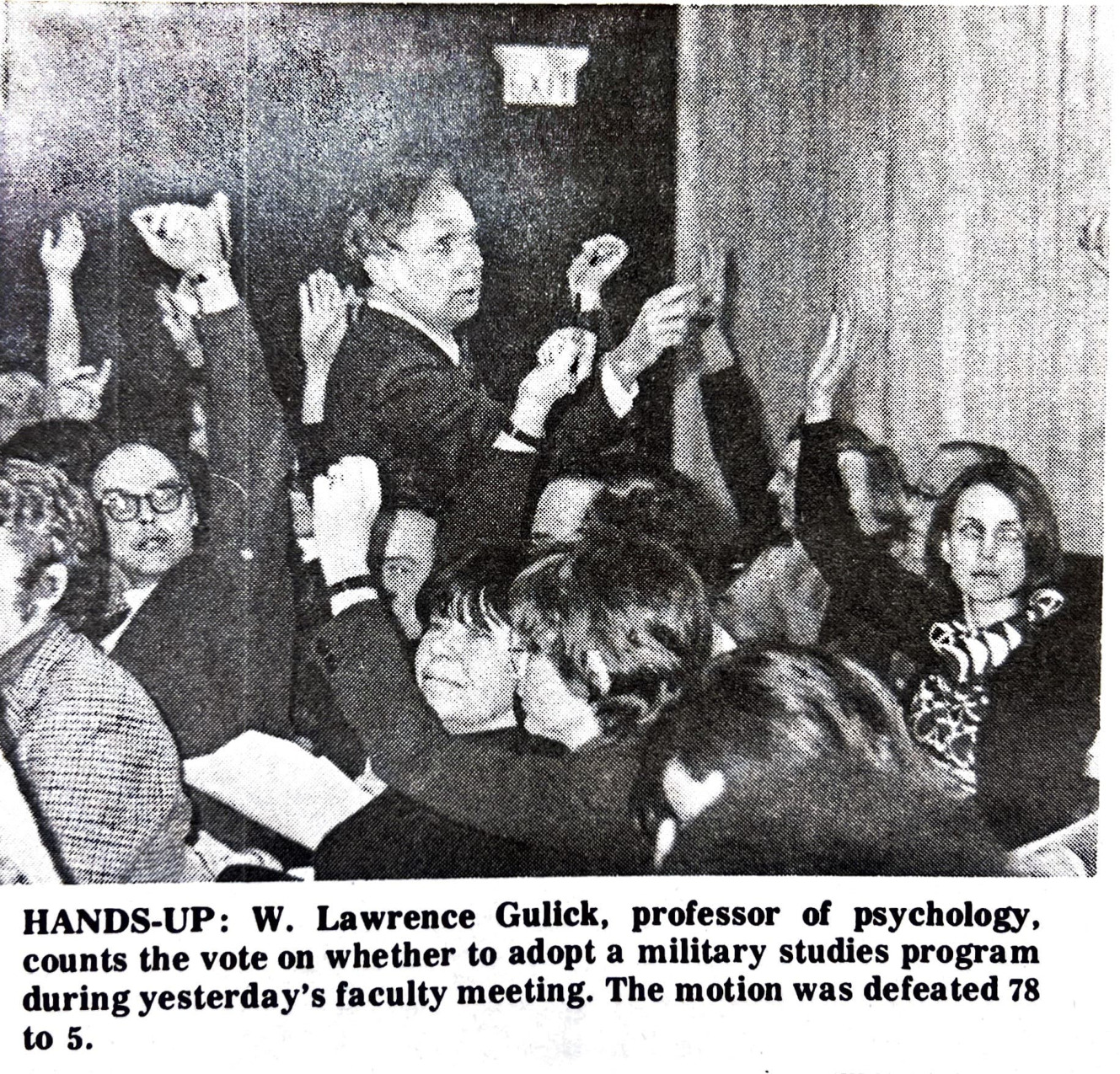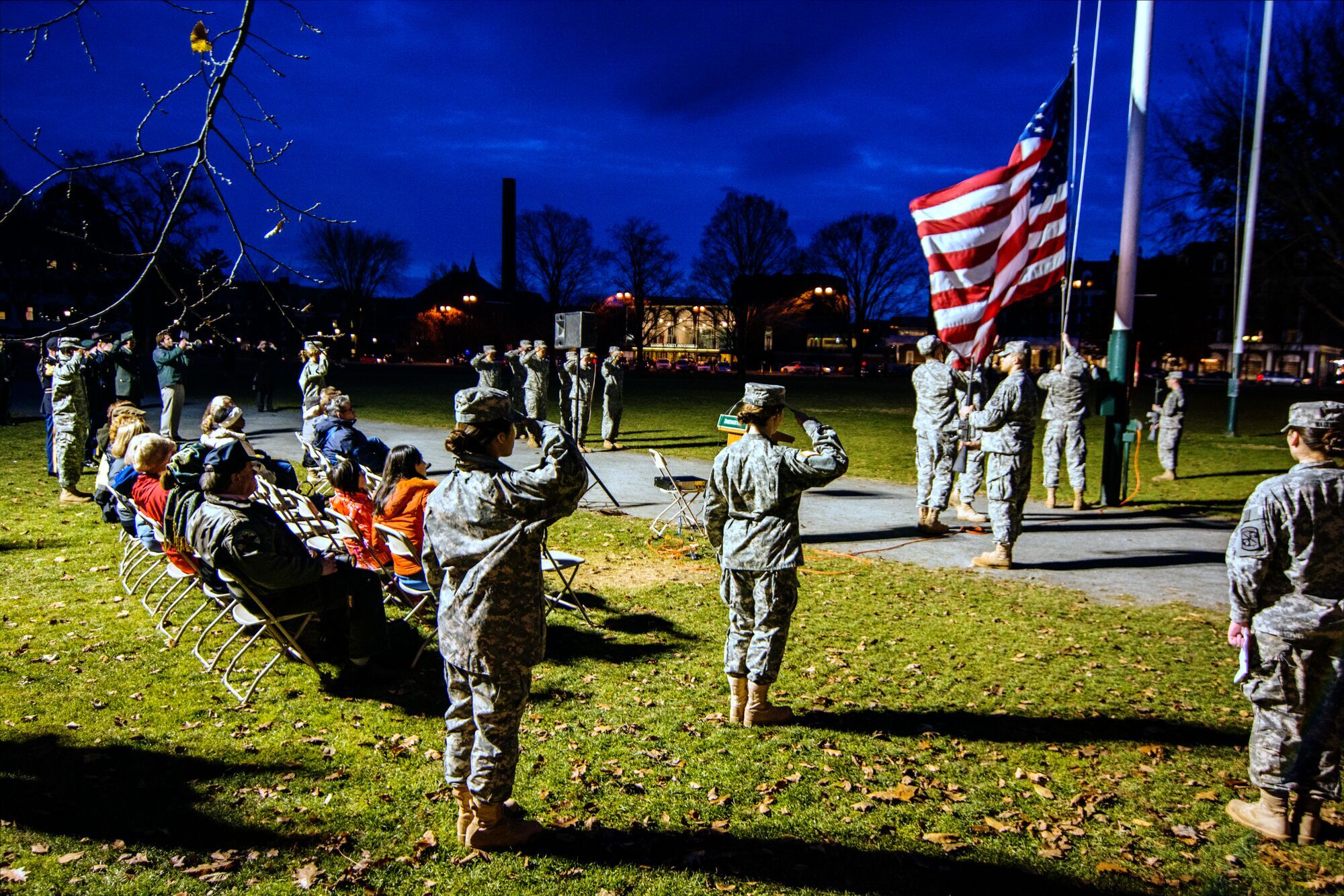Reviving ROTC: The Influence of Alumni and New Military Needs
When, why, and how was ROTC brought back at Dartmouth?
The charged reactions to Dartmouth abolishing ROTC would lead the Dartmouth Board of Trustees to vote to reinstate ROTC in 1975, less than ten years after the faculty voted to terminate the program in 1969. Much had changed in the seven intermittent years, though, both at Dartmouth and in the U.S. as a whole. The need for manpower in the military had gone down, leading the reinstated ROTC program to be a significantly smaller campus presence. This again led to a new wave of reactions by Dartmouth alumni.
A Long and Contested Process: Reinstating ROTC
Not long after ROTC was abolished at Dartmouth in 1969, the Alumni Council requested a reconsideration of an ROTC program at Dartmouth in 1971. The Board of Trustees delayed discussions until 1973, when they voted to “initiate a thorough review of the feasibility and desirability of an ROTC program at Dartmouth.” A committee of students, faculty, and alumni reviewed the possibilities of how ROTC could be reinstated at Dartmouth. This began a long and contentious debate involving the Trustees, the faculty, as well as alumni and students. In general, the opinion of the faculty and the student body is said to have been vehemently against reinstating the ROTC program. Despite this, the Board of Trustees voted on June 6, 1975 to reinstate ROTC at Dartmouth, sparking discussions with the Pentagon on how to proceed. The trustees, President Kemeny said, felt that “it would be good for the U.S. Army to have officers of the caliber of Dartmouth students.” Their reasoning was likely also in part the result of many disappointed and disgruntled alumni, who were upset to have seen the program terminated. Daniel Walden ‘65 said that he urged the College not to abolish ROTC, and stopped donating to Dartmouth for a period of time after they did. One can only assume that Walden was not alone, especially since alumni initiated the discussions of reinstating ROTC in the first place. This June 1975 vote by the trustees did not officially reinstate the ROTC program but rather represented the decision that the ROTC program would be reinstated in the near future.
“The trustees described their decision [to reinstate ROTC] as on ‘in keeping with the College’s continuing commitment to diversity and pluralism in education and its broader commitments to society and the nation” -The Dartmouth, June 24, 1975
When the trustees reinstated ROTC, they planned for a cross-enrollment program with Norwich University. They left the possibility of a permanent, on campus program to be decided in the future. Despite student protests, President Kemeny signed the cross-enrollment agreement with Norwich University on December 31, 1975. While discussions of on campus ROTC programs continued to be proposed, they continued to be shot down. An on-campus Army ROTC program and an on campus Navy ROTC program were proposed in the years closely following 1975, but both were denied by the faculty and the trustees. The cross-enrollment program continued, though. In 1988, Edward Shanahan, the Dean of the College, wrote to the incoming freshman class encouraging them to enroll in ROTC. ROTC never gained the traction that it had previously, though.
A Diminished Need for Military Manpower Leads to a Reduced ROTC Program
When Dartmouth reinstated ROTC in 1975, the Pentagon instructed them to do so in a minimized capacity, through an affiliation with nearby Norwich University. In 1975, when the trustees voted to reinstate ROTC at Dartmouth, the U.S. had recently suspended the draft in 1973. The suspension of the draft was a result of a diminished need for military manpower. The military transitioned to an all-volunteer operation.
From a peak of 3,547,942 U.S. Military Personnel on active duty in 1968, there was a sharp decline to 2,128,120 personnel on active duty in 1975. This decline in the overall size of the military meant that the number of officers required also rapidly decreased. Thus, the Pentagon no longer required an ongoing supply of officers as supplied by ROTC programs. Structurally, the U.S. Military had experienced a change that meant there was no longer a need for a large ROTC program at Dartmouth. This change in manpower requirements led the Pentagon to reinstate ROTC at Dartmouth only in a small capacity affiliated with Norwich University. This cross-enrollment Army ROTC program with Norwich University continues to operate today. That Dartmouth still does not have its own on-campus ROTC program continues to frustrate alumni of the once incredibly popular ROTC program at Dartmouth, but the current political situation and lack of a need for an increased steady supply of officers suggests that it is unlikely to change in the near future.
More details about Dartmouth's current Army ROTC program can be found on their website.




